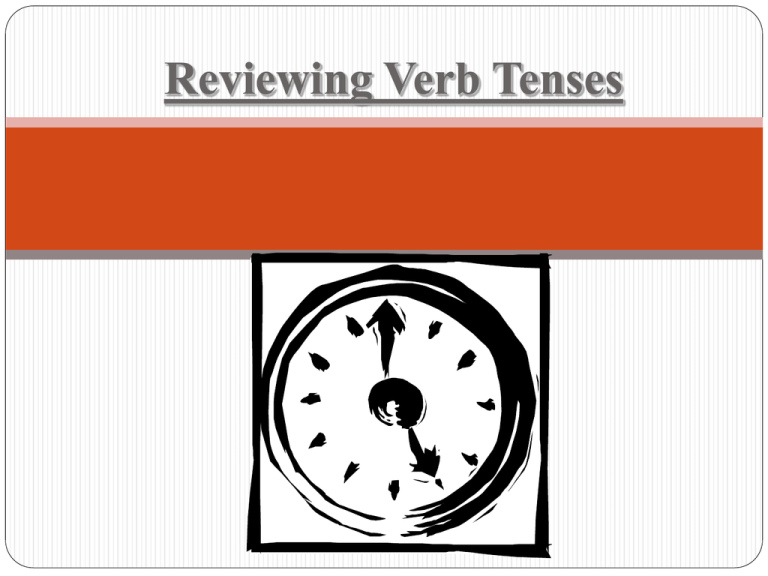(subject) Auxiliary Verb - Colegio Hispano Americano
advertisement

Reviewing Verb Tenses Verb Tense Review The Importance of Time Verb tense expresses the time of an event or action. Time and how it is expressed in writing is very important to English readers. The English language has twelve different tenses. In this lesson, we will review only four of them. Simple Present Expresses a habit or often repeated action. Adverbs of frequency such as often, seldom, sometimes, never, etc. are used with this tense. She goes to work everyday. They always eat lunch together. Grammar structure Auxiliary verb: Do/does Affirmative Subject + verb (-s) + complement Negative Subject + do /does NOT + verb + complement Interrogative Do/does + subject + verb + complement ? Yes, + subject + do/does X No, + subject + do/does + not Pronouns (subject) Auxiliary Verb I Do You Do She Does He Does It Does They Do We Do She He It Add “s” to the verb Examples Simple present Aff: He runs everyday Neg: He doesn’t run everyday Interrogative: Does he run everyday? yes, he does. X No, he does not. Present Continuous This tense is used to describe an action that is occurring right now (at this moment, today, this year, etc.). The action has begun and is still in progress. She is writing a paper for her class. He can’t talk. He is fixing the sink right now. Grammar structure Auxiliary verb: To be (am/is/are) Affirmative Subject + to be + verb(-ING) + complement Negative Subject + to be + NOT + verb(-ING) + complement Interrogative To be + subject + verb(-ING) + complement ? Yes, + subject + am/is/are X No, + subject + am/is/are + not Pronouns (subject) Auxiliary Verb I Am You Are She Is He Is It Is They Are We Are Examples Present Continuous Aff: She is reading a book. Neg: She is not reading a book. Interrogative: Is she reading a book? yes, she is. X No, she is not. Simple Past We use the simple past to indicate exactly when an action or event took place in the past. I visited my sister yesterday. We went out to dinner last night. Grammar structure Auxiliary verb: Did Affirmative Subject + verb (-ed) + complement Negative Subject + did + NOT + verb + complement Interrogative Did + subject + verb + complement ? Yes, + subject + did X No, + subject + did + not Pronouns (subject) Auxiliary Verb I Did You Did She Did He Did It Did They Did We Did Regular verbs Past Tense Add+ed Listen- listened Dance- danced Examples Simple past A: They watched T.V yesterday. N: They didn’t watch T.V yesterday. I: Did they watch T.V yesterday? yes, they did. X No, they did not. Past Continuous The past progressive is used to talk about an activity that was in progress at a specific point of time in the past. The emphasis is on the duration of the activity in the past. I was studying for an exam while my mother was cooking dinner. We were walking in the park around 7 p.m. last night. Grammar structure Auxiliary verb: to be (was/were) Affirmative Subject + to be + verb(-ING) + complement Negative Subject + to be + NOT + verb(-ING) + complement Interrogative To be + subject + verb(-ING) + complement ? Yes, + subject + was / were X No, + subject + was / were + not Pronouns (subject) Auxiliary Verb I Was You Were She Was He Was It Was They Were We Were Examples Past Continuous A: We were listening to music for 1 hour. N: We weren’t listening to music for 1 hour I: Were we listening to music for 1 hour? yes, we were. X No, we were not.









